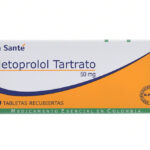Proxalin Plus: Side Effects, Dosage, Uses, and Review

Proxalin Plus: Side Effects, Dosage, Uses, and Review
Proxalin Plus is Mexican combination analgesic and antipyretic medicine containing naproxen and acetaminophen. Naproxen is a non-steroidal anti-inflammatory drug (NSAID). It works by reducing hormones that cause inflammation and pain in the body. Paracetamol is usually the best treatment for most types of pain, but naproxen is better for some types, such as period pain or back pain.
Acetaminophen on the other hand relieves pain by elevating the pain threshold, that is, by requiring a greater amount of pain to develop before a person feels it. It reduces fever through its action on the heat-regulating center of the brain. In combination, this medication has analgesic, antipyretic and weak anti-inflammatory action.
How is Proxalin Plus taken?
Generally, the dosage and administration of Proxalin Plus is weight dependant. When taken oral or rectally, adults and adolescents with a body weight over 60 kg use a dose of 500 mg up to 4 times with a maximum duration of treatment of about 5-7 days.
Maximum dose: single – 1 g, daily – 4 g.
Single dose for oral administration for children aged 6-12 years – 250-500 mg, 1-5 years – 120-250 mg, from 3 months to 1 year – 60-120 mg, up to 3 months – 10 mg / kg. Single dose rectal in children aged 6-12 years – 250-500 mg, 1-5 years – 125-250 mg.
Multiplicity – 4 at intervals of not less than 4 h. The maximum duration of treatment – 3 days.
Maximum dose: 4 single dose per day.
What are the side effects of Proxalin Plus?
Proxalin Plus may cause side effects. Tell your doctor if any of these symptoms are severe or do not go away:
• constipation
• diarrhea
• gas
• excessive thirst
• headache
• dizziness
• lightheadedness
• drowsiness
• difficulty falling asleep or staying asleep
• burning or tingling in the arms or legs
• cold symptoms
• ringing in the ears
• hearing problems
Some side effects can be serious. If you experience any of the following symptoms, call your doctor immediately. Do not take any more Proxalin Plus until you speak to your doctor:
• changes in vision
• feeling that the tablet is stuck in your throat
• unexplained weight gain
• shortness of breath or difficulty breathing
• swelling in the abdomen, ankles, feet, or legs
• sore throat, fever, chills, and other signs of infection
• blisters
• rash
• skin reddening
• itching
• hives
• swelling of the eyes, face, lips, tongue, throat, arms, or hands
• difficulty breathing or swallowing
• hoarseness
• excessive tiredness
• pain in the upper right part of the stomach
• nausea
• yellowing of the skin or eyes
• flu-like symptoms
• bruises or purple blotches under the skin
• fast heartbeat
• cloudy, discolored, or bloody urine
• back pain
• difficult or painful urination
• decreased urination
• loss of appetite
• confusion
Proxalin Plus may cause other side effects. Call your doctor if you have any unusual problems while taking this medication.
Proxalin Plus Safety Information
People who take nonsteroidal anti-inflammatory drugs (NSAIDs) (other than aspirin) such as Proxalin Plus may have a higher risk of having a heart attack or a stroke than people who do not take these medications. These events may happen without warning and may cause death. This risk may be higher for people who take NSAIDs for a long time. Do not take an NSAID such as Proxalin Plus if you have recently had a heart attack, unless directed to do so by your doctor. Tell your doctor if you or anyone in your family has or has ever had heart disease, a heart attack, or a stroke, if you smoke, and if you have or have ever had high cholesterol, high blood pressure, or diabetes. Get emergency medical help right away if you experience any of the following symptoms: chest pain, shortness of breath, weakness in one part or side of the body, or slurred speech.
If you will be undergoing a coronary artery bypass graft (CABG; a type of heart surgery), you should not take Proxalin Plus right before or right after the surgery.
NSAIDs such as Proxalin Plus may cause ulcers, bleeding, or holes in the stomach or intestine. These problems may develop at any time during treatment, may happen without warning symptoms, and may cause death. The risk may be higher for people who take NSAIDs for a long time, are older in age, have poor health, or who drink three or more alcoholic drinks per day while taking Proxalin Plus. Tell your doctor if you take any of the following medications: anticoagulants (”blood thinners”) such as warfarin (Coumadin, Jantoven); aspirin; other NSAIDs such as ibuprofen (Advil, Motrin) and ketoprofen; oral steroids such as dexamethasone, methylprednisolone (Medrol), and prednisone (Rayos); selective serotonin reuptake inhibitors (SSRIs) such as citalopram (Celexa), fluoxetine (Prozac, Sarafem, Selfemra, in Symbyax), fluvoxamine (Luvox), paroxetine (Brisdelle, Paxil, Pexeva), and sertraline (Zoloft); or serotonin norepinephrine reuptake inhibitors (SNRIs) such as desvenlafaxine (Khedezla, Pristiq), duloxetine (Cymbalta), and venlafaxine (Effexor XR). Also tell your doctor if you have or have ever had ulcers, bleeding in your stomach or intestines, or other bleeding disorders. If you experience any of the following symptoms, stop taking Proxalin Plus and call your doctor: stomach pain, heartburn, vomit that is bloody or looks like coffee grounds, blood in the stool, or black and tarry stools.
Keep all appointments with your doctor and the laboratory. Your doctor will monitor your symptoms carefully and will probably order certain tests to check your body’s response to Proxalin Plus. Be sure to tell your doctor how you are feeling so that your doctor can prescribe the right amount of medication to treat your condition with the lowest risk of serious side effects.
Your doctor or pharmacist will give you the manufacturer’s patient information sheet (Medication Guide) when you begin treatment with prescription Proxalin Plus and each time you refill your prescription. Read the information carefully and ask your doctor or pharmacist if you have any questions. You can also visit the Food and Drug Administration (FDA) website (http://www.fda.gov/Drugs/DrugSafety/ucm085729.htm) or the manufacturer’s website to obtain the Medication Guide.





